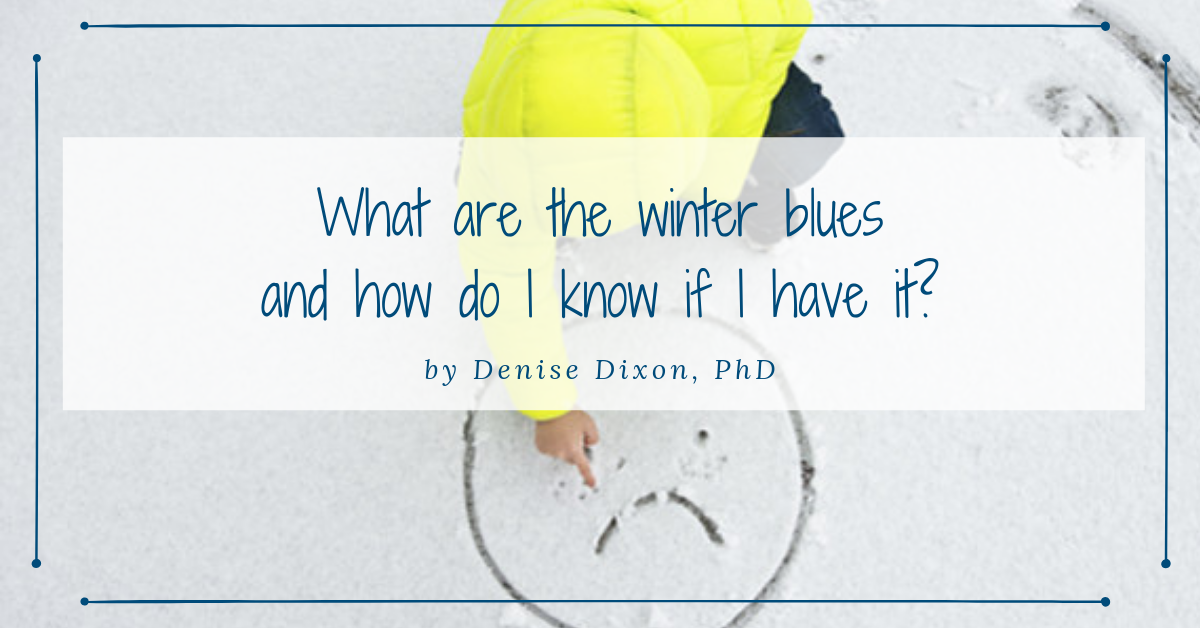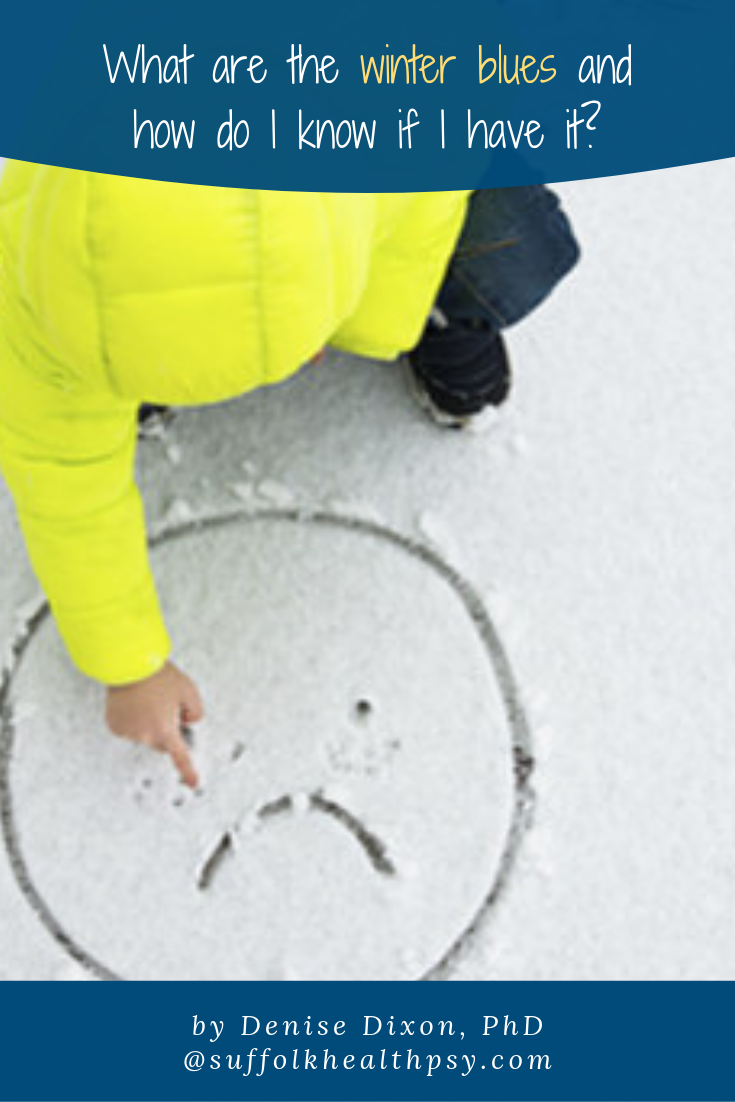
Part One of this mini-series will focus on describing the signs and symptoms of Seasonal Affective Disorder (or SAD).
Look for Part Two later this week, when we will learn about evidence-based treatments for SAD!
RELATED: 7 easy steps to find the right psychologist for you
What are the Winter Blues, or Seasonal Affective Disorder (SAD)?
[tweet_dis]Seasonal Affective Disorder (or SAD) is a type of depression that happens more than once, and has a seasonal pattern. It usually begins in the fall, and continues into the winter months.[/tweet_dis] One type of SAD (sub-syndromal SAD, or S-SAD) is known as the “winter blues. A less common type of SAD occurs in the spring or early summer.

Picture by AdinaVoicu on Pixabay.
Who Is Most at Risk for the Winter Blues, or Seasonal Affective Disorder?
Some people are more at risk for developing SAD, including:
- Females
- Younger people
- People with family histories of depression, bipolar disorder, or SAD
- People who live far from the equator
What Causes the Winter Blues, or Seasonal Affective Disorder?
No one really knows what causes SAD.
One theory is that decreased sunlight exposure affects the natural biological clock.
[tweet_dis]Darkness increases amount of melatonin that the body produces. Melatonin is a very important hormone involved in sleep. As the winter days get shorter and darker, the body makes more melatonin, and people tend to have less energy, and feel sleepier.[/tweet_dis]
Another theory is that people with SAD may have problems with levels of serotonin, a major neurotransmitter (or “brain hormone”) involved with mood.
Also, some research has shown that people with SAD have been found with lower levels of Vitamin D, which may affect serotonin levels.
What Are the Symptoms of the Winter Blues, or Seasonal Affective Disorder?
While SAD affects people differently, symptoms of the “winter blues” include
- Feeling sad (obviously)
- Feeling hopeless
- Feeling irritable
- Feeling anxious
- Sleeping too much
- Eating too much
- Craving sweet or starchy foods (carbohydrates)
- Weight gain
- Problems with waking up in the morning
- Lower levels of energy
- Lower amounts of physical activity
- Fatigue
- Problems with concentrating
- Lower sex drive
- Not wanting to spend time with family or friends
- Avoiding social situations
- Feeling more “sensitive” or “touchy” around friends or family
These symptoms usually start in September — November, and last until March — April of each year.
Symptoms of summertime SAD include:
- Agitation
- Feeling anxious
- Problems with sleeping
- Feeling more restless
- Lack of appetite
- Weight loss
Other problems that go along with SAD can include:
- Family problems
- Tearfulness
- Physical complaints – headache, heart palpitations, aches and pains
- Missing work or school
In severe instances, people with SAD can experience suicidal thoughts.
How Is Seasonal Affective Disorder Diagnosed?
SAD is not considered a separate disorder. It is a type of depression with a seasonal pattern. [tweet_box design=”box_11″ float=”none”]To be diagnosed with SAD, a person must have major depression symptoms that happen during specific seasons for at least two years; and must have seasonal depressions more often than depression that happens throughout the year.[/tweet_box]
Symptoms of SAD tend to happen at about the same time every year. The changes in mood should not be a direct result of obvious seasonal-related stress (like being regularly unemployed during the winter). Usually, the symptoms of SAD are mild or moderate. However, some people experience severe symptoms that leave them unable to function in their daily lives.
[tweet_dis]Seasonal Affective Disorder can be misdiagnosed as hypothyroidyism (low thyroid hormone levels); hypoglycemia (low blood sugar); alcohol or other substance misuse; or a viral infection such as mononucleosis.[/tweet_dis]
When Should I seek Professional Help?
If you experience symptoms associated with SAD, then seek help form a licensed health care provider!
RELATED: 7 easy steps to find the right psychologist for you
If you have thoughts of wanting to harm yourself or others, or feel that life is no longer worth living, then seek immediate medical attention or call the National Suicide Prevention Lifeline at 1-800-273-TALK (8255) for more information.
Is there a way for me to find out if I may have SAD, before going to my healthcare provider?
Yes!
If you are interested in seeing if you have (or tend to get) Seasonal Affective Disorder, you can take this quiz.
- Scores over 9 or 10 with a problem rating of at least mild suggest that you suffer from s-SAD, of the “winter blues,” considered a sub-type of SAD.
- Scores over 11, with a problem rating of at least moderate suggest SAD
[tweet_dis]It is always recommended that a person seek help from a licensed health care provider for any type of depression![/tweet_dis] You can tell your provider that you took a test that suggested that you may have S-SAD (“winter blues”) or SAD. You can then talk about what treatments to start.
We hope that this blog was helpful!
Now that you know about SAD, look to Part Two, to learn about treatments for SAD, and ways that you can help yourself!
UP NEXT: What are the best ways to feel better if I have Seasonal Affective Disorder?
SEASONAL AFFECTIVE DISORDER: REFERENCES AND RESOURCES:
Please click here for links to references for this blog post, and here to access additional links and resources.







0 Comments